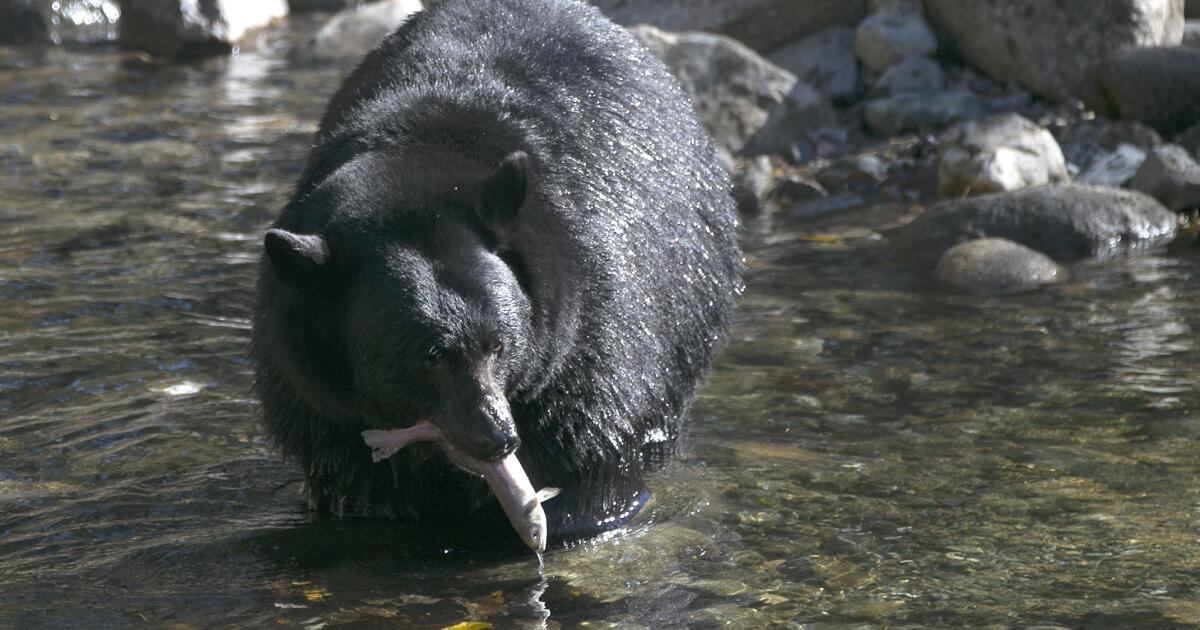Autumn is the time of year when bears Really they begin to think with their stomachs.
Some double their weight to prepare for hibernation, often consuming calories for up to 20 hours a day. This feeding frenzy, called hyperphagia, forces them to leave their usual habitat and head to nearby dumpsters in search of an easy meal.
That instinct led one hungry Nevada black bear to a South Lake Tahoe home, surprising an 87-year-old man who went into the garage to get firewood before dawn Wednesday.
“The man returned to his home and when he did, the bear struck him and scratched his arm,” said Ashley Zehme, spokeswoman for the Nevada Department of Wildlife. “The bear then followed him into the house.”
Moments later, the confused bear scratched the homeowner's wife and then ran outside after the couple's granddaughter opened the doors and windows to clear the exit. Both residents were treated and released from the hospital with minor injuries.
Zeme said the incident is a rare escalation, but nonetheless shows how autumn hyperphagia is changing the behavior of bears in the region.
“During hyperphagia, it is more likely that a bear will come into the house,” she said, noting that as winter approaches, bears require a staggering 20,000 to 25,000 calories per day. “In the wild, they try to replenish their calories with berries and insects. But when they come across trash in the neighborhood, that's all the calories they need in one place.”
The best way to prevent bear encounters is to clean up trash and remove attractive items such as bird feeders, pet food, refrigerators and barbecue grills, she said.
Hyperphagia usually lasts from August to November. During this period, bears sharply expand their search radius, often moving deeper into residential areas. Once a bear finds an easy reward, it tends to return and gets bolder, wildlife officials say. In the Tahoe Basin, where bears have long learned that residents and vacationers bring dense, reliable calories with them, the hyperphagia coincides with an increase in reports of trash raids, break-ins and, less commonly, incidents like the one that occurred Wednesday.
“Once they get a food reward every time they go into an area, they will come back again and again,” Zeme said. “They have a good memory and they are smart.”
Zeme stressed that the bear in this week's case appeared confused and scared, but officials have not ruled out the possibility that it could have been predatory behavior.
“This is unusual territory for a bear,” she said. “They weren't used to being in houses or garages. The bear was probably confused, scared. Who knows what it was. But it wasn't normal.”
Wildlife officials said approximately 90% of bear-related incidents involve unsecured trash, so residents in areas where bears live are advised to lock up trash and food in wildlife-resistant containers and not leave bags outside. They also advise residents to keep food out of vehicles, lock doors and windows and use electric fencing to protect beehives and chicken coops.
“We always see a lot of bear activity this time of year,” Zehme said. “Protecting attractants is the best way to protect against them.”








